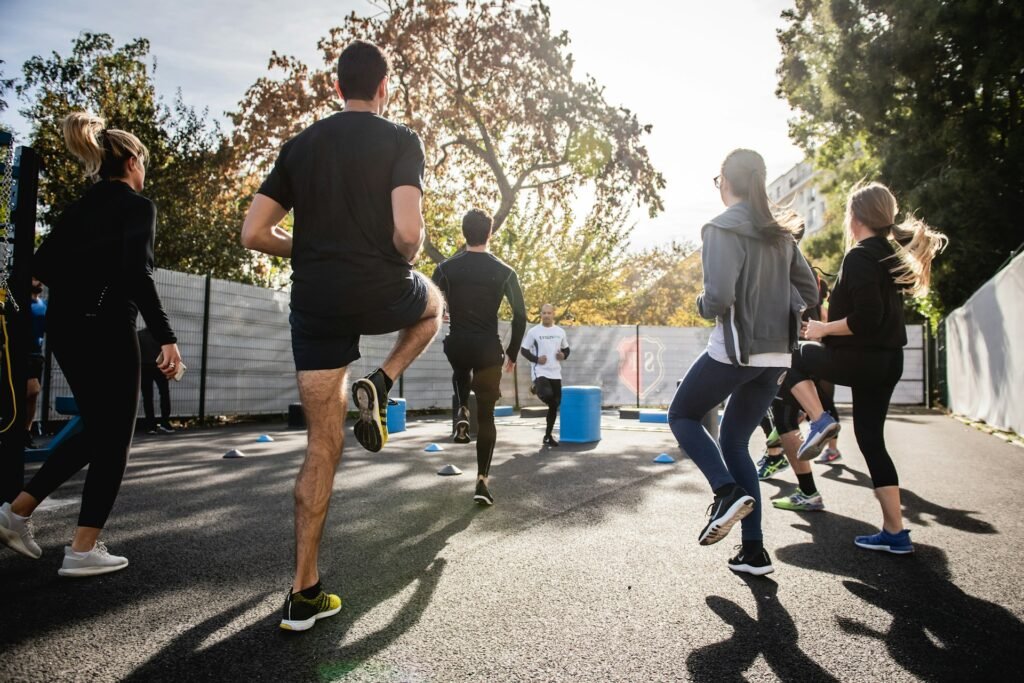Exercise is essential for maintaining physical health, boosting mental well-being, and improving quality of life. However, with so many types of exercise available, it can be overwhelming to determine which one is best suited to your goals, preferences, and lifestyle. Whether you’re looking to lose weight, gain muscle, enhance flexibility, or simply stay active, understanding the different forms of exercise can help you make informed choices.
1. Cardiovascular (Aerobic) Exercise
Examples: Running, cycling, swimming, brisk walking, dancing, rowing
Benefits:
- Improves heart and lung health
- Burns calories and aids weight loss
- Increases stamina and endurance
- Boosts mood and reduces stress
Best For: Individuals looking to improve cardiovascular health, lose weight, or increase endurance. Ideal for people who enjoy rhythmic, repetitive movements.
2. Strength (Resistance) Training
Examples: Weightlifting, resistance bands, bodyweight exercises (push-ups, squats), kettlebell workouts
Benefits:
- Builds and maintains muscle mass
- Improves bone density
- Enhances metabolism and helps in weight management
- Strengthens joints and supports functional movement
Best For: Those aiming to build muscle, tone the body, improve metabolism, or prevent age-related muscle loss. Perfect for people who enjoy structured workouts with visible progress.
3. Flexibility and Mobility Workouts
Examples: Yoga, Pilates, stretching routines, dynamic warm-ups
Benefits:
- Enhances range of motion
- Prevents injury
- Reduces muscle stiffness and soreness
- Promotes relaxation and stress relief
Best For: People recovering from injury, older adults, or anyone wanting to improve their range of motion and body awareness. Great for individuals seeking low-impact, meditative forms of exercise.
4. High-Intensity Interval Training (HIIT)
Examples: Tabata, circuit training, sprint intervals
Benefits:
- Burns a high number of calories in a short time
- Improves cardiovascular fitness and metabolic rate
- Builds both strength and endurance
- Time-efficient
Best For: Busy individuals looking for quick but effective workouts, or those who enjoy fast-paced, challenging routines.
5. Mind-Body Exercises
Examples: Tai Chi, Qigong, yoga (also a flexibility workout)
Benefits:
- Enhances mental focus and mindfulness
- Reduces anxiety and stress
- Improves balance and coordination
- Gentle on the body
Best For: Those seeking mental clarity, balance, and a more holistic approach to fitness. Especially beneficial for managing stress or chronic conditions.
6. Functional Fitness
Examples: Bodyweight movements, kettlebells, balance and coordination drills
Benefits:
- Mimics everyday movements
- Enhances real-life physical function
- Reduces risk of injury
- Improves posture and stability
Best For: Older adults, athletes, or anyone wanting to improve their performance in daily activities.
How to Choose the Right Type for You
Consider the following questions:
- What are your goals? (Weight loss, muscle gain, mental wellness, flexibility, etc.)
- What do you enjoy? (Enjoyment increases consistency.)
- What’s your current fitness level? (Start with something achievable.)
- Do you have any injuries or medical conditions? (Consult with a healthcare provider if needed.)
Final Thoughts
There’s no one-size-fits-all approach to exercise. The best type is the one that you enjoy and can maintain consistently. Often, a combination of exercise types—cardio for heart health, strength training for muscle, flexibility for mobility—offers the most well-rounded benefits.
Start where you are, experiment with different styles, and most importantly, keep moving.
Would you like a chart comparing these exercise types side-by-side?

